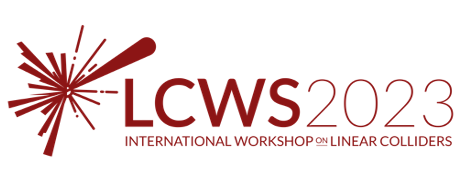Speaker
Description
In preparing to secure commitments to approve the ILC in Japan, the ILC International Design Team (IDT) has identified a prioritized list of critical R&D Work Packages (WPs) that should be pursued in a timely matter. Among these WPs, WP-16 has been identified by an ICFA sponsored Machine Advisory Committee review as having very high priority. WP-16 consists of two sub-tasks with the first task being to complete the construction (90% already done) and vibration stability cold cryostat testing of the QD0 Final Focus (FF) prototype that was left unfinished after the ILC TDR was published. Note when colliding two few nanometers sized beams, transverse displacement of the FF magnetic centers by this same amount would result in luminosity loss that can only be recovered by a dedicated beam-based feedback system. Presently the motion budget assigned for the FF magnets that can be accommodated by the state-of-the-art foreseen bunch train feedback system is 50 nanometers; however, we have no measurement data available for the FF magnets in the QD0 prototype cryostat to compare to and it is easy to postulate causes for magnet motion that could be much larger than 50 nanometers. The second WP-16 task takes note that in the years since the 2017 ILC TDR writing, there have been significant advances in IR magnet manufacturing technology and conceptual designs, for instance spurred by the FCC-ee IR FF magnet work. Accordingly with WP-16 task two, we have an opportunity to study and update the IR magnet and Machine Detector Interface (MDI) layout to take advantage of all such advances (such as side-by-side self-consistent external field crosstalk compensating coil designs from the FCC-ee). At this point we want to point out that for any proposed future very-high luminosity lepton collider, the vertical beam spot collision size will be of order a few nanometers and vibration stability of cryostated FF magnets is quite relevant to understand luminosity performance. And results obtained from reoptimizing the ILC FF magnet designs and other MDI improvements are also more widely applicable to other colliders. Certainly, the ILC needs this R&D done and since we argue that this work has fundamental general applicability, WP-16 should be funded as soon as possible.



